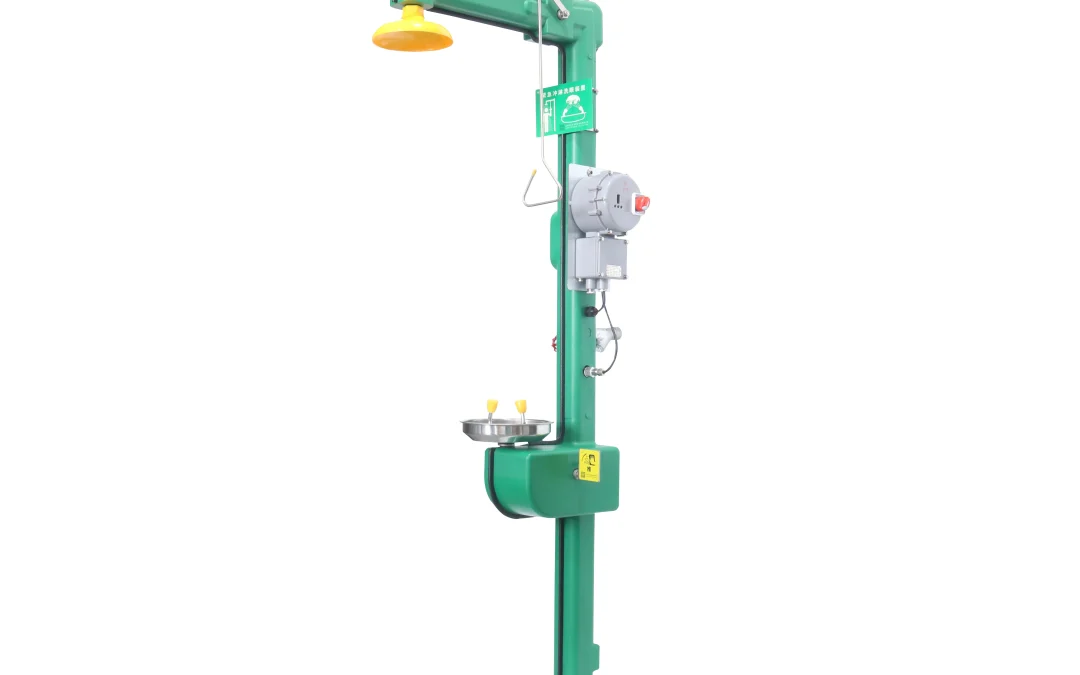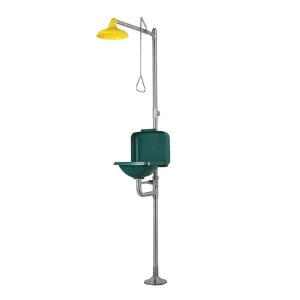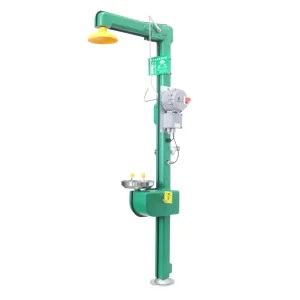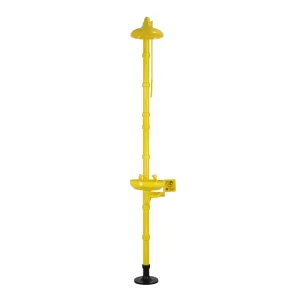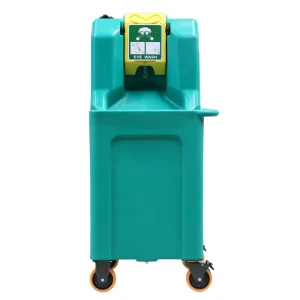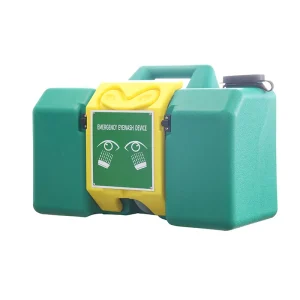In chemical, laboratory, and other high-risk industrial environments, combined eyewash stations are critical safety equipment. Their winter antifreeze performance directly impacts emergency response efficiency. Based on the principles of experience, expertise, authority, and trustworthiness, and incorporating industry practices and technical specifications, this article systematically explains winter antifreeze strategies to help companies build safe and reliable emergency response systems.
I. Experience: Common Pain Points and Solutions for Winter Freeze Prevention
- Typical Scenarios of Frozen Water Pipes
Low Temperature Environments: When the temperature drops below 0°C, residual water inside the eyewash can easily freeze, clogging the sprinkler system.
Idle Equipment: Eyewashes that have not been used for a long time are more susceptible to ice crystal formation due to reduced hydrostatic pressure.
Design Flaws: Traditional eyewashes lack freeze protection and frequently malfunction in cold northern regions. - Field-Proven Freeze Prevention Methods
Physical Draining Methods:
Manual Draining: After use, open the drain valve to completely drain any remaining water from the pipe (applicable to standard equipment such as the BTF11 stainless steel eyewash).
Foot-Activated Draining: Some newer equipment (such as automatic draining eyewashes) use a foot switch to trigger draining, making operation more convenient.
Electric Heating Technology:
Principle: An electric heating cable is wrapped around the water pipe, and a temperature controller maintains the water temperature between 15°C and 38°C (compliant with ANSI Z358.1-2014). Advantages: Permanently solves the freezing problem, suitable for extremely cold environments below -20°C.
Insulation Wrapping:
Wrap water pipes with materials such as foam plastic shells and glass wool to reduce heat loss (low cost, but the insulation integrity requires regular inspection).
II. Professional: Scientific Principles of Antifreeze Technology and Selection Recommendations - Technical Classification of Antifreeze Eyewash Stations
Type Principle Applicable Scenarios
Automatic Drainage: Uses gravity or air pressure to drain residual water from pipes. Suitable for general industrial areas in the north.
Electrical Heating: Uses heating tape to maintain water temperature. Suitable for extremely cold regions (such as the northeast and northwest).
Underground: Buries the equipment underground to utilize ground heat for insulation. Suitable for locations with limited space or where concealed installation is required. - Key Parameters and Selection Criteria
Water Temperature Control: The flushing fluid temperature must be maintained between 16°C and 38°C to avoid exacerbating chemical burns due to low temperatures or accelerating reactions due to high temperatures.
Water Flow Requirement:
Spray System: ≥75.7L/min (measured data for BTF11 equipment). Eyewash System: ≥11.4 L/min (compliant with ANSI standards).
Material Options:
304 Stainless Steel: Highly corrosion-resistant, suitable for most chemical applications.
PP: Lightweight and low-cost, but requires regular inspection for degradation.
III. Authority: Industry Standards and Compliance Requirements - International Standard References
ANSI Z358.1-2014: Requires eyewash stations to operate normally in environments between -4°C and 38°C, with the spray system required to operate continuously for at least 15 minutes.
OSHA 29 CFR 1910.151: Requires that workplaces be equipped with standard emergency flushing equipment. - Domestic Practice Guidelines
GB 50493-2019: Requires that eyewash stations be installed no more than 15 meters from hazardous areas, with clear access routes.
“Safety and Hygiene Design Code for Chemical Enterprises”: Emphasizes the use of electric heating or underground anti-freeze designs in extremely cold regions. IV. Credibility: Long-Term Maintenance and Management of Antifreeze Measures - Daily Inspection Checklist
Weekly Startup Test: Check the water flow of the spray and eyewash systems for smooth flow and record the pressure.
Monthly Drain Cleaning: Empty sediment from the pipes to prevent bacterial growth.
Quarterly Insulation Inspection: Replace damaged foam or glass wool. - Emergency Response Procedure
Ice Treatment:
Irrigate the frozen area with warm (not boiling) water.
Use a hair dryer on low setting to assist in defrosting (maintain a distance of at least 20 cm).
After complete thawing, restart the equipment and confirm normal water flow.
Fault Reporting: If you discover any problems such as water leaks or insufficient pressure, immediately contact the manufacturer (such as Anhang or Yurun Security) for repair.
V. Product Recommendation: Test Data for Antifreeze Combined Eyewash Stations - BTF11 Stainless Steel Eyewash Station (Anhang Brand)
Parameters:
Material: SS304 stainless steel.
Spray Flow Rate: 76 L/min (measured value). Eyewash flow rate: 11.4 L/min (measured value).
Antifreeze function: Optional electric heating module.
User feedback:
Tested at a chemical plant in northern China: Continuous operation at -15°C without ice formation.
Maintenance cost: Annual replacement of the electric heating cable (approximately 200 yuan).
- Yurun Security Automatic Drain Eyewash
Innovative design:
Foot pedal triggers drain, operation time ≤ 3 seconds.
Built-in temperature sensor, automatic low-temperature alarm.
Applicable scenarios:
Laboratories, electronics workshops, and other space-constrained locations.
Conclusion: Balancing antifreeze and safety
Winter antifreeze is not just a matter of equipment maintenance; it’s also a reflection of a company’s safety culture. Through scientific selection (such as an electric heating eyewash), standardized installation (in accordance with ANSI standards), and regular maintenance (weekly testing), you can ensure that your combined eyewash remains efficient in extreme cold. As a Shanghai Hong’an safety expert put it, “Every investment in antifreeze measures is a 100% guarantee for employee safety.”

